Which compressor is best? – The classics
What will we cover in this tutorial:
– Fairchild 660 / 670
– SSL 4000 bus compressor
– Urei 1176
– Teletronix LA-2A
With a compressor you can color the sound. That’s why some vintage compressors are still very popular. Some sound very ‘punchy’, other compressors can add ‘warmth’ to your mix. If you know this, you can always find the best compressor to give your mix exactly the color it needs.
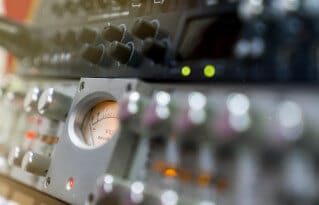
To help you on your way, in this tutorial we will look at some of the most famous compressors ever made. They have been used on many hit records over the years. And the best thing is that all of them have been re-created as a plugin. So everyone can use them in their productions.
We will also mention what technical part is responsible for the specific sound of a compressor (like tubes or VCA’s). Because other compressors with the same techniques usually have a similar effect on your mix. So you know what to look for in a compressor if you are looking for a specific sound.
Fairchild 660 / 670
The Fairchild 660 (mono) and 670 (stereo) were developed in the 1950s. They are considered the ‘holy grail’ of compressors. Or, if you look at it from another perspective, they are extremely rare and partly because of that they are extremely expensive. You easily pay 30,000 euros for one unit, if you can find one at all.
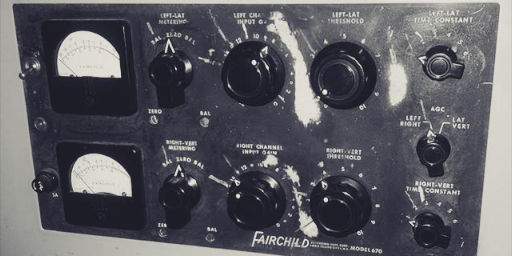
(photo by Universal Audio)
The compressor owes its specific sound to the tubes that are used in it. Tubes can be used to amplify audio. But they are far from perfect. They get hot as hell, a lot of energy they use is wasted on heat and on top of all that they distort the audio.
Despite all that they are still very popular, because they distort the audio in a good way. It’s that distortion that gives that warm and full sound. The hotter the signal, the more distortion. And sometimes the better it sounds.
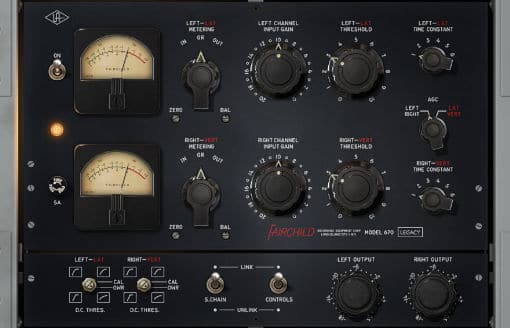
Thankfully you don’t have to spend 30,000 euros to experiment with the Fairchild compressor. It has been recreated as a plugin by many plugin manufacturers, like Universal Audio (see image above) and Waves.
Never read manuals? You’re not alone. 🙂 But in this case it may be better to break with that tradition because those very old compressors usually have different (exotic) controls compared to modern compressors.
Using the Fairchild 660/670 in your mix
This compressor can be used on almost any instrument. 🙂 The Beatles used it on almost all vocal recordings since the ‘A Hard Day’s Night’ sessions in 1964 and they also used it a lot on drums. I also like to use it on piano or acoustic guitar sometimes, depending on the style of music. Besides that it’s also a great mastering compressor.
SSL 4000 bus compressor
If you think of a studio from the 80’s and 90’s, you probably instantly think of a huge mixing console filling up most of the space. It is very likely that this mixing console was an SSL (Solid State Logic), used a lot in top-end studio’s those days. See image below.
Such a console has all kinds of processing on board, including equalizers and compressors. The compressor on the SSL type 4000 became very popular. Or actually: specifically the compressor found on the master section of that console. You can still buy it, as an analog rack compressor, or in the form of a plugin- remake.
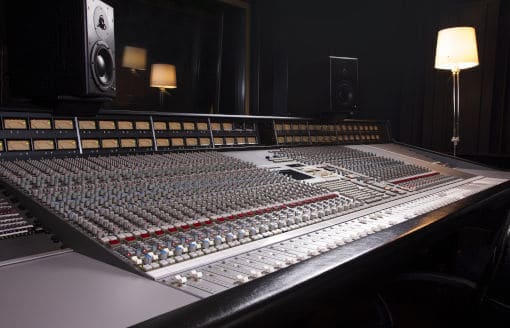
It does it’s magic using VCA’s (Voltage Controlled Amplifiers). To make a good mix not important to know what that is, but it is important to realize that a VCA produces a very specific sound. Where a tube compressor sounds warm, full and maybe sometimes a bit undefined, this compressor sounds punchy, clean and ‘in your face’. It’s used in many tracks of Dr. Dre and Eminem, on the drums to be exact. One of the reasons these beats sounds so punchy.
The SSL compressor is available as a plugin remake from Plugin Alliance and Universal Audio (image below). SSL has also released a plugin version of their most popular compressor.
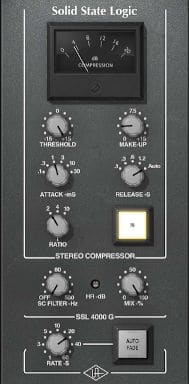
Using the SSL bus compressor in your mix
The compressor works pre-eminently on groups, such as drum groups. It works less well on individual instruments. For drums, the SSL bus compressor is really a classic that can add just that little bit of ‘punch’ to your drum sound. Personally, I think it works best with subtle settings. I use it more for colouring than for compression. This compressor can also work well on the full mix. If you are looking for a clean and punchy sound and you are looking for something to ‘glue’ your mix together, this compressor can do a lot for you.
Urei 1176
The Urei 1176 was developed in the 1960s. Again a true classic, which can still be found in almost every music studio. It is still produced (by Universal Audio) and, of course, it is also available as a plugin (from Softube, Universal Audio, Native Instruments).

The sound is mostly determined by a FET (Field Effect Transistor). The compressor sounds clean, but gives a nice ‘edge’ to your mix. Works perfectly on drums or vocals (and voice-overs as well), it helps to make it ‘cut trough’ the mix.
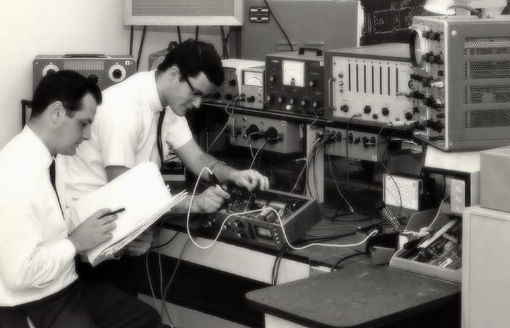
(photo by Universal Audio)
Small thing to watch out for: the attack and realease knobs work just the other way around compared to modern compressors. So counter clockwise gives a higher attack or release value!
Using the Urei 1176 in your mix
This compressor is a classic on vocals. A lot of big hits are mixed with this compressor on vocals. But it is a fantastic all-rounder. On drums (especially the snare drum), electric guitar and percussion, but I also like to use it on brass recordings sometimes.
Teletronix LA-2A
Another classic from the 60s. This compressor uses tubes to amplify the audio, but the compression itself is done with an optical circuit (with a ‘photo resistor’). We won’t cover the technical details because if you know how such a photo resistor works, your mix won’t get any better.
But the sound it gives is again very specific! Hard to describe, so I would say go play with the LA-2A plugin from Universal Audio, Waves or PSP (MixPressor 2). Works great on vocals and bass guitars and I also use it on guitars in some cases.
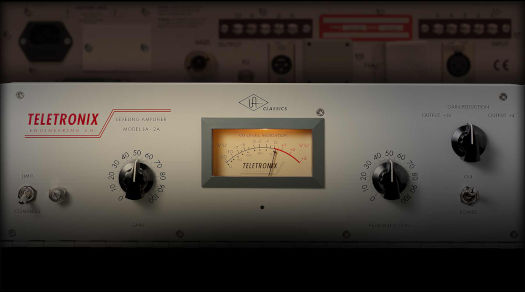
(photo by Universal Audio)
If you take some time for it and compare the various compressor types (tube, VCA, FET, optical), you start to recognize the different timbres. Start with the compressors from this tutorial. You can’t go wrong with these classics and it’s a great start to explore the world of compressors!
If you know your compressors, you will always choose exactly the right compressor for the job and make a better mix.
Using the Teletronix LA-2A in your mix
This compressor is often used on bass guitar, drums, but it is also used on vocals. It is not the most obvious application, but I often use it for podcast recordings as well. To temper the voice recordings a bit and to give it a nice colouring during recording.

